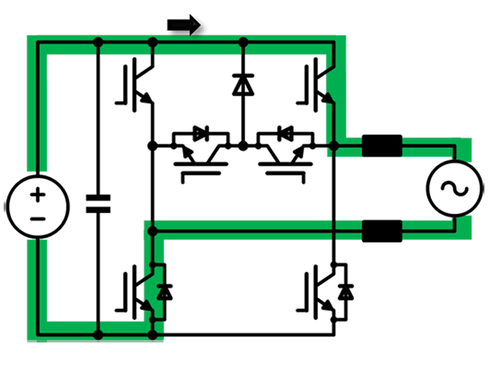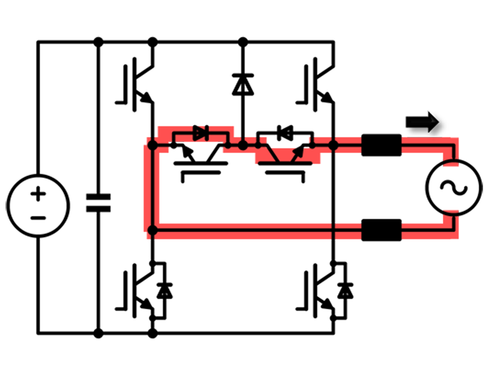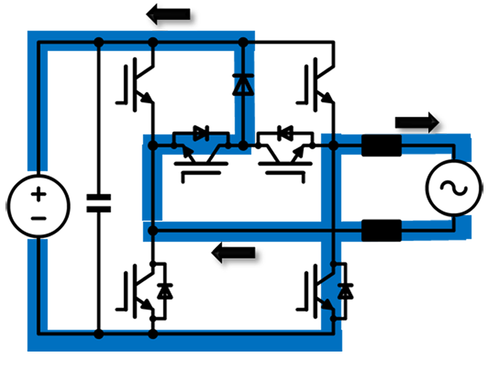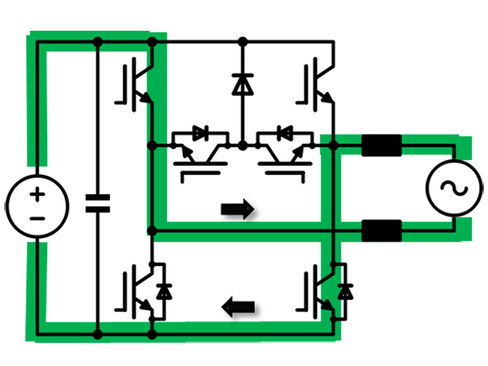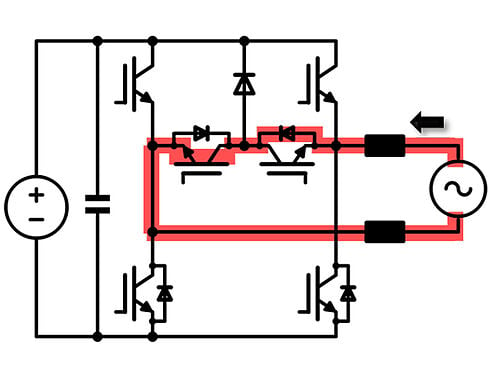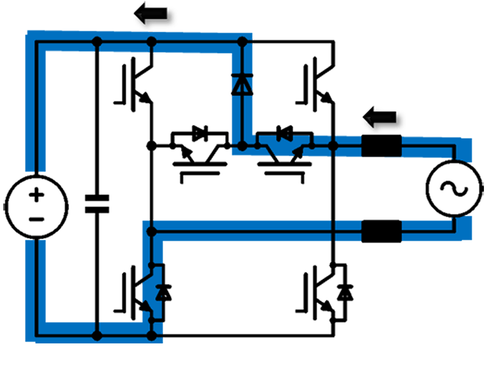The New H6.5 Topology
Three-level topologies' enticing benefits are twofold: high efficiency and reduced filtering effort. Several multi-level topologies for single-phase solar applications are already on the market. The main drawback of this two-level operation is that it requires a relatively large output filter and regenerates energy back to the DC capacitor during freewheeling. This regenerated energy flows to the inverter twice, which takes a toll on efficiency. Three-level topologies such as H6.5, in contrast, reduce filtering effort and switching losses.
Three-level topologies such as H6.5 uncouple the DC link capacitor from the AC output in the freewheeling phase to reduce overall losses.
The new topology uses six IGBTs like the HERIC topology, but it requires just five diodes.
How the new H6.5 topology works:
positive half-wave
negative half-wave
Performance
The new topology achieves the same real power performance as the HERIC topology. There is a price to pay for reducing the number of diodes from six to five, namely one additional junction at freewheeling during reactive power. However, this is of negligible importance in solar applications.
Pros:
Low static losses at real power operation:
- Voltage drop at real power during ON: two IGBTs
- Voltage drop at real power during OFF and freewheeling: two IGBTs + two diodes
Cons:
Complex structure:
- This requires six IGBTs (four of the ultrafast switching variety) and five fast diodes.
- Voltage drop at reactive power during OFF and freewheeling: three diodes


